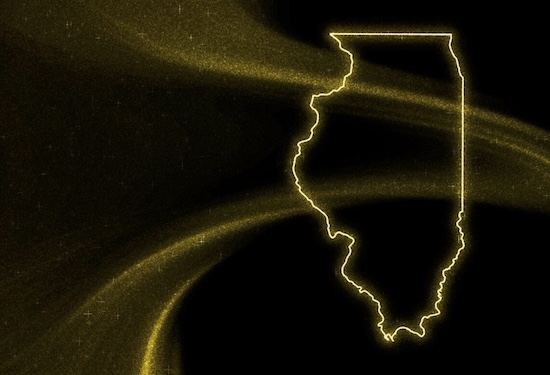
Mississippi: A State Steeped in History
August 30, 2024
History of Alabama: From European Settlement to the Iron Bowl
September 4, 2024From Prairie State to Industrial Powerhouse: The Evolution of Illinois Throughout History
Illinois, known as the “Land of Lincoln,” has a fascinating history that spans centuries. From its early days as a vast prairie inhabited by Native American tribes to its transformation into a bustling industrial center, Illinois has played a significant role in shaping the history of the United States. Explore the stories of the people, events, and industries that have left their mark on this diverse and vibrant state.
The Early Settlement of Illinois.
The early settlement of Illinois dates back thousands of years, with evidence of Native American tribes inhabiting the region as early as 10,000 BCE. These tribes, including the Illini, Miami, and Potawatomi, relied on the rich resources of the land for their survival. They established villages, cultivated crops, and engaged in trade with neighboring tribes.
In the 17th century, European explorers and traders began to venture into the Illinois territory. French explorers such as Jacques Marquette and Louis Jolliet explored the Mississippi River and established a trading post near present-day Chicago. The French presence in Illinois grew with the establishment of settlements and the fur trade.
However, the French control over Illinois was short-lived. In 1763, as a result of the French and Indian War, the territory was ceded to the British. The British rule was also brief, as the American Revolutionary War led to the transfer of Illinois to the newly formed United States in 1783.
The early settlers of Illinois faced numerous challenges, including conflicts with Native American tribes and the harsh conditions of the prairie. However, the fertile land and abundant natural resources attracted pioneers from across the country. The population of Illinois grew rapidly, and new towns and cities were established.
The early settlement period laid the foundation for the future development of Illinois. It set the stage for the state’s transformation into an industrial powerhouse, as the rich agricultural resources and strategic location of Illinois attracted industries such as manufacturing, mining, and transportation.
Today, the early settlement history of Illinois is preserved and celebrated through museums, historical sites, and cultural events. It serves as a reminder of the diverse and dynamic past of this great state.
The Impact of the Industrial Revolution on Illinois.
The Industrial Revolution had a profound impact on the state of Illinois, transforming it from a primarily agricultural region into a thriving industrial powerhouse. The introduction of new technologies and manufacturing processes revolutionized the state’s economy and led to significant population growth.
One of the key industries that emerged during this time was manufacturing. Illinois became a hub for manufacturing, particularly in the production of machinery, steel, and automobiles. Cities like Chicago and Rockford became major industrial centers, attracting workers from all over the country.
The mining industry also played a crucial role in Illinois’ industrial development. The state’s rich coal deposits fueled the growth of the coal mining industry, providing energy for factories and powering the steam engines that drove the industrial machinery.
Transportation infrastructure also underwent significant improvements during this period. The construction of railroads and canals connected Illinois to other parts of the country, facilitating the movement of goods and people. The Illinois and Michigan Canal, for example, provided a vital link between the Great Lakes and the Mississippi River, opening up new trade routes and boosting economic growth.
The industrialization of Illinois brought about significant social and economic changes. It created new job opportunities and attracted a diverse population of workers, leading to increased urbanization. However, it also led to challenges such as poor working conditions, labor disputes, and environmental pollution.
Despite these challenges, the industrial revolution propelled Illinois into a position of economic prominence. The state’s manufacturing and transportation industries continued to thrive throughout the 20th century, contributing to its status as a major economic powerhouse.
Today, the impact of the industrial revolution can still be seen in Illinois, with remnants of old factories and industrial sites serving as reminders of the state’s industrial past. The legacy of this transformative period continues to shape Illinois’ economy and identity.
The Rise of Chicago as a Major City.
The industrial revolution played a significant role in the rise of Chicago as a major city. As manufacturing and transportation industries boomed, Chicago became a hub for trade and commerce. Its strategic location on the shores of Lake Michigan and its access to railroads and canals made it an ideal center for the movement of goods.
The city’s population grew rapidly as people from all over the country flocked to Chicago in search of job opportunities. Immigrants, particularly from Europe, played a crucial role in the city’s growth, bringing with them diverse skills and cultures.
Chicago’s industrial prowess was particularly evident in its meatpacking industry. The city became known as the “Hog Butcher for the World” and the “Packingtown” due to its large-scale meatpacking operations. The Union Stock Yards, established in 1865, became the largest livestock market in the world, processing millions of animals each year.
The growth of manufacturing and trade in Chicago also led to the development of a bustling downtown area. Skyscrapers began to dot the city’s skyline, showcasing architectural innovation and symbolizing its economic power.
However, the rapid growth and industrialization also brought challenges. The city faced issues such as overcrowding, poor living conditions, and labor disputes. The Great Chicago Fire of 1871, while devastating, also provided an opportunity for the city to rebuild and modernize its infrastructure.
Despite these challenges, Chicago emerged as a major cultural and economic center. It became a hub for arts, literature, and music, attracting renowned artists and intellectuals. The city’s vibrant neighborhoods, such as Bronzeville and Little Italy, became centers of cultural expression and community.
Today, Chicago continues to be a thriving metropolis, with a diverse economy that includes finance, technology, and tourism. Its rich industrial history is still evident in its architecture, museums, and cultural institutions. The rise of Chicago as a major city during the industrial revolution remains a testament to the transformative power of industrialization.
The Role of Agriculture in Illinois’ Development.
Agriculture played a crucial role in the development of Illinois throughout its history. The state’s fertile soil and favorable climate made it an ideal location for farming, attracting settlers and immigrants who sought to establish agricultural communities.
In the early years, farmers in Illinois primarily grew crops such as corn, wheat, and oats. These crops not only provided sustenance for the local population but also served as important commodities for trade. The construction of canals and railroads further facilitated the transportation of agricultural products to markets in other states.
As the state’s population grew and technology advanced, farming practices evolved. Farmers began adopting new techniques and machinery, such as the use of tractors and combines, to increase productivity and efficiency. This allowed them to cultivate larger areas of land and produce higher yields.
Illinois also became a major producer of livestock and dairy products. Cattle, hogs, and poultry were raised on farms throughout the state, and dairy farms supplied milk, cheese, and butter to local communities.
The agricultural industry in Illinois not only provided food and resources but also contributed to the state’s economy. The abundance of agricultural products supported the growth of related industries, such as food processing and manufacturing. Additionally, the agricultural sector created employment opportunities for many residents, both on farms and in associated industries.
Today, agriculture remains an important part of Illinois’ economy. The state is a leading producer of corn, soybeans, and livestock, contributing significantly to the nation’s food supply. The agricultural sector continues to innovate and adapt to changing market demands, ensuring its continued role in the state’s development.
The Influence of Immigrants on Illinois’ Growth.
Immigrants played a significant role in the growth and development of Illinois throughout its history. In the early years, immigrants from countries such as Germany, Ireland, and Sweden settled in Illinois and established thriving communities. These immigrants brought with them their knowledge and skills in agriculture, contributing to the state’s agricultural success.
Many immigrants also played a crucial role in the industrialization of Illinois. In the late 19th and early 20th centuries, immigrants from countries such as Poland, Italy, and Lithuania came to Illinois to work in industries such as steel, coal mining, and manufacturing. Their labor and expertise helped transform Illinois into an industrial powerhouse.
These immigrant communities not only contributed to the state’s economy but also enriched its cultural fabric. They brought with them their traditions, languages, and customs, creating a diverse and vibrant society in Illinois.
Today, the influence of immigrants can still be seen in Illinois. The state continues to attract immigrants from around the world, who contribute to its economic growth, cultural diversity, and overall development. Immigrants have played a vital role in shaping Illinois into the dynamic and thriving state it is today.
Here’re eight other things America’s 21st state has to offer:
- The Land of Lincoln: Illinois is known as the “Land of Lincoln” because it is the birthplace of the 16th President of the United States, Abraham Lincoln. Visitors can explore Lincoln’s life and legacy at the Abraham Lincoln Presidential Library and Museum in Springfield.
- The Windy City: Illinois is home to one of the most iconic cities in the world, Chicago. Known as the “Windy City,” Chicago offers a vibrant cultural scene, stunning architecture, world-class museums, and delicious deep-dish pizza.
- Natural Wonders: Illinois is not just about the city life. The state is also home to beautiful natural wonders, such as Starved Rock State Park. Located along the Illinois River, this park offers stunning canyons, waterfalls, and hiking trails, making it a perfect destination for outdoor enthusiasts.
- Sports Galore: Illinois residents are passionate about sports. The state is home to several professional sports teams, including the Chicago Cubs (MLB), Chicago White Sox (MLB), Chicago Bulls (NBA), and Chicago Bears (NFL). Attending a game and experiencing the electric atmosphere is a must for sports fans.
- Route 66: Illinois is a significant part of the historic Route 66, the iconic highway that stretches from Chicago to Santa Monica, California. Traveling along Route 66 in Illinois allows visitors to experience the nostalgia of a bygone era, with classic diners, vintage motels, and quirky roadside attractions.
- Cultural Diversity: Illinois is a melting pot of cultures and ethnicities. From the vibrant neighborhoods of Chicago, such as Chinatown and Little Italy, to the annual Taste of Chicago festival, where visitors can sample cuisine from around the world, the state celebrates its diverse population.
- Agricultural Powerhouse: Illinois is a leading agricultural state, known for its vast corn and soybean fields. The state’s fertile soil and favorable climate make it an ideal location for farming. Visitors can explore agricultural attractions, such as farm tours and farmers’ markets, to learn more about Illinois’ agricultural heritage.
- Personalized Newspapers: If they’re ever looking for the perfect gift to get someone in their life, Illinoians can have a My FrontPage Story shipped directly to their doorstep.
Illinois offers a diverse range of attractions and experiences, from the bustling city life of Chicago to the natural beauty of its parks and the rich cultural heritage of its communities. Whether you’re a history buff, sports enthusiast, nature lover, or foodie, Illinois has something to offer everyone.
Written by Ubersuggest




